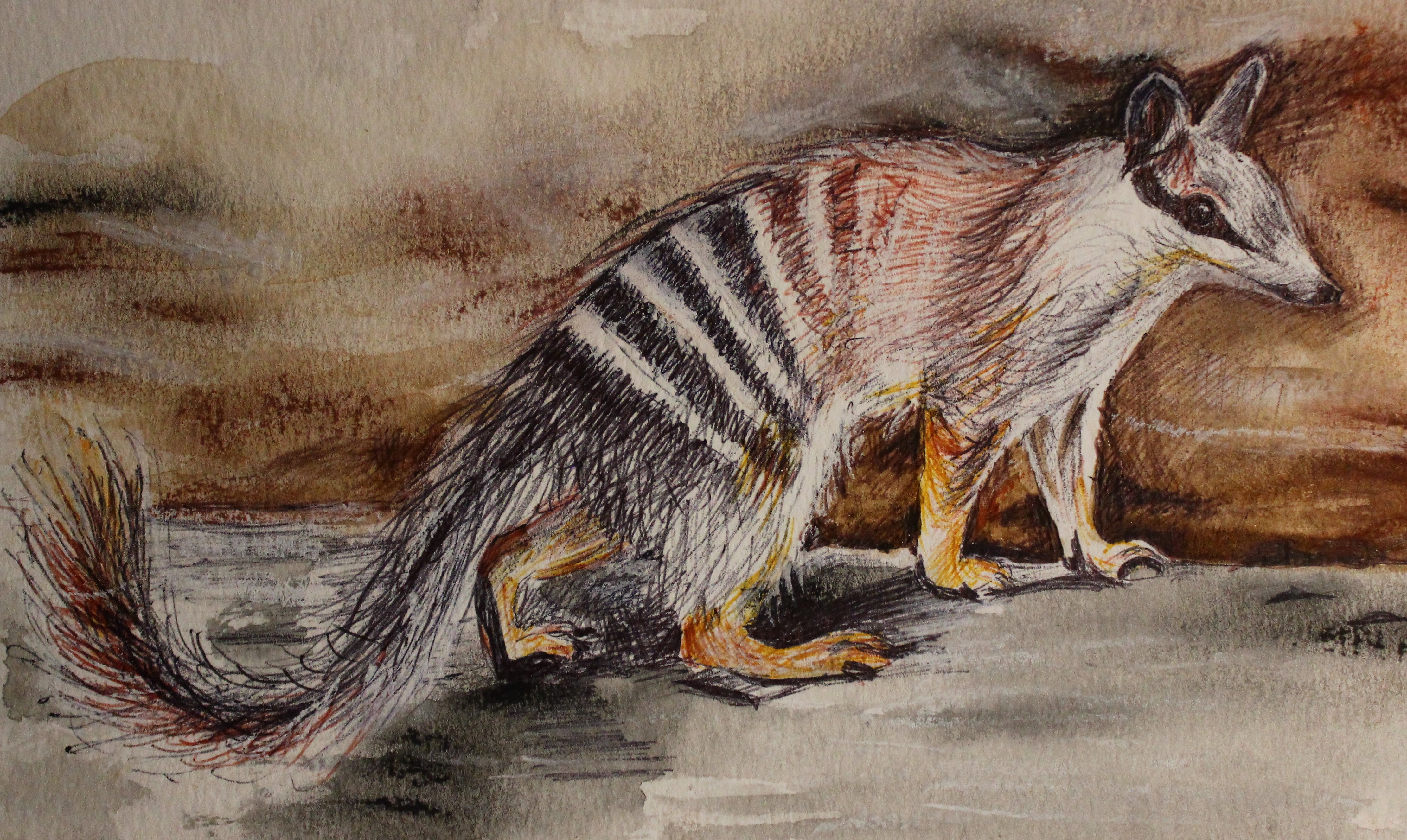Ballpoint pen and watercolour on paper, 2022, A5 size.
1. Animal: Numbat (Myrmecobius fasciatus)
- The numbat, also called the banded anteater, is a small endangered marsupial animal native to parts of Australia. There are fewer than 1,000 Numbats left in the wild.
- Numbats grow to about 25 centimetres long (not including the fluffy tail which adds a further 17 centimetres), and have a striking pattern rusty orange and grey-black fur, with transverse white bands across the rump. Numbats were found across much of arid and semi-arid southern Australia, however, only two naturally occurring populations remain, both in south-west Western Australia.
- Numbats, like other carnivorous marsupials, do not have a proper pouch for carrying their young. They have skinfolds that cover the babies that are suckling on the mother’s four teats. Long guard hairs offer some warmth to young in the pouch.
- The Numbat eats termites exclusively – they can eat up to 20,000 a day. Numbats do not need to drink water because they get enough water from the termites they eat.
- Numbats are solitary animals, which means they do not live with other members of their species. Because termites are small and hard to find, Numbats can’t afford to share them with others, so they live alone.
2. Why they are endangered?
The main threat to Numbats is predation by introduced predators – foxes and cats. This threat of predation is exacerbated by other factors including habitat loss and fragmentation from land clearing, which also makes Numbats more vulnerable to birds of prey such as Wedge-tailed Eagles and falcons.
